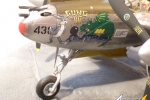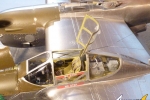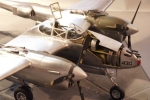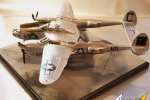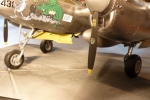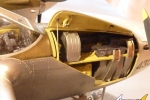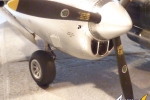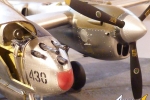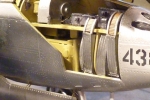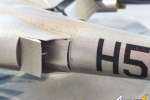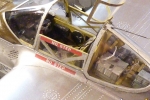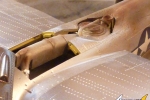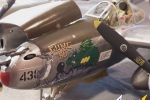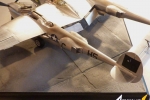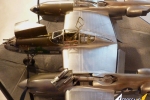1⁄32Gung Ho Lightning
9
Comments
history
Lockheed designed the P-38 in response to a February 1937 specification from the United States Army Air Corps. Circular Proposal X-608 was a set of aircraft performance goals authored by First Lieutenant Benjamin S. Kelsey (later Brigadier General) and First Lieutenant Gordon P. Saville (later General) for a twin-engine, high-altitude "interceptor" having "the tactical mission of interception and attack of hostile aircraft at high altitude." Kelsey recalled in 1977 that he and Saville drew up the specification using the word interceptor as a way to bypass the inflexible Army Air Corps requirement for pursuit aircraft to carry no more than 500 lb (227 kg) of armament including ammunition, as well as the restriction of single-seat aircraft to one engine.The P-38 was used most extensively and successfully in the Pacific theatre, where it proved ideally suited, combining excellent performance with very long range, and had the added reliability of two engines for long missions over water. The P-38 was used in a variety of roles, especially escorting bombers at altitudes between 18–25,000 ft (5,500-7,600 m). The P-38 was credited with destroying more Japanese aircraft than any other USAAF fighter.
History adapted from Wikipedia
the model
Here's Trumpeter's P-38L Lightning with Kitsworld aftermarket decals and the Eduard Big Ed etch set.Cheers for looking.
Comments
Robert; great model! Honestly, when I saw the banner photo on the home page, I thought it was a museum walk-around.
AUG 23, 2014 - 09:15 AM
Robert,
Simply a truly outstanding build of Trumpeter's 1/32 scale P-38L. What sets your build apart from others is the high quality of your NMF. It's certainly has that museum high gloss finish.
Joel
AUG 23, 2014 - 11:28 AM
Very nice indeed Robert!
I am curious about one thing though, why are only the inboard flaps deployed? I am pretty sure that all 4 flaps deploy in unison.
Cheers Rob.
AUG 27, 2014 - 09:29 PM
I know there are images of P-38s on finals with everything down and naturally as combat flaps they would be deployed.
I've also seen museum displays with everything down, curiously, as I wasn't aware that hydraulics were lost when the plane was idle, so don't know why museums display them deployed apart from adding a dynamic display quality.
A great number of other photos of machines in maintenance etc show the control surfaces in neutral positions, which seem to be most common.
Trumpeter provided metal hinges and pins, not to everyone's liking as they are a little difficult to work with. I found that the inner flaps were more naturally deployed down. The outboard control surfaces, however, were more problematic, where the tight fit of styrene and metal near the tapering wingtip halves led to a snug fit indeed.
On the model displayed here, the outer units can be pressed down a little as deployed, but the 'springback' element of tension drew them virtually back to a neutral position. I seem to recall that the instructions were not decisive in display deployment (I'm not at home at the moment, so can't doublecheck the instructions in my files.), but I think as a presentation of the Lightning as a type the model still works well.
I think if it was an RC model and was expected to undertake airborne maneuvers I would be more circumspect in my views, but as I'm not a modeller who requires the exact number of rivets in the 1:1 machine to be committed to memory before building the styrene example in 1/32, and while I'm sure you're correct on this point of technical evaluation, I suspect that the license taken here is acceptable to most modellers.
Happy modelling!
AUG 29, 2014 - 01:24 AM
Hi Robert,
I understand completely I just thought you should know if you did not already.
Cheers Rob.
AUG 29, 2014 - 02:53 AM
Copyright ©2021 by Robert Pollock. Images also by copyright holder unless otherwise noted. The views and opinions expressed herein are solely the views and opinions of the authors and/or contributors to this Web site and do not necessarily represent the views and/or opinions of AeroScale, KitMaker Network, or Silver Star Enterrpises. Images also by copyright holder unless otherwise noted. Opinions expressed are those of the author(s) and not necessarily those of AeroScale. All rights reserved. Originally published on: 2014-08-23 14:47:48. Unique Reads: 6146





